While working on my medieval gown, I struggled with a lacing cord for it. There isn’t much that is suitable in Wellington, and I didn’t really have time to order something in.
I used a simple linen cord to hold it the dress together while I was working on it, but it started fraying pretty quickly, and also made the dress look a little too Friar Tuck robe-ish.
I researched cord options and came across lucet cords. I read a couple of tutorials (I’m all about reading tutorials, youtube is not my thing) and realised that lucet cord is basically a two-finger yarn lei – and I know how to make yarn leis!
Unfortunately along with a dearth of period-appropriate cording in Wellington, I haven’t been able to source a lucet fork in NZ.
I started out really make do: with a plastic fork with the middle tines broken out, and linen thread. The resulting cord was beautiful, but the making process was rather unsatisfactory. I was only able to make rate at about 2cm an hour, and the thread kept slipping off and then I would have to unravel to get to a point where I could be sure I was at the right place to restart, and it was all quite discouraging.
I was also slightly worried that the cord was going to be so tiny and delicate that it wouldn’t be strong enough to lace my dress.
So I went and found some wider linen cord, and I improvised a lucet fork:
Or, as Mr D puts it, in tones of scandalised horror worthy of the primmest spinster headmistress “You broke a fork!”
I keep trying to convince him that the fork was already broken (it had a bent tine), I just improved the break into something useful, but every time he sees it he mutters about breaking forks.
With a better fork, and bigger starter cord, my lucet cording went along quite speedily. Unfortunately I quickly discovered that it was going to be too thick for lacing, but I persevered, figuring I could use it as a belt.
And then, when it was almost done, a bit more research on medieval cording suggested that while it may (note emphasis!) have been done in the very early medieval period, there is no evidence for lucet cording in the 14th century, and I really should have done finger weaving.
So now I have a length of lucet cord with no obvious use.
Felicity, however, loves it, as did a friend’s cat. Felicity wants to just hold it and rub her face against it (she’s all about texture) and Poh the cat adored chasing it. It pulls and moves quite satisfactorily. So, I have a historical (for the 18th century, if nothing else), elaborate, expensive, cat toy?
The Challenge: #9 Brown
Fabric: NA
Pattern: Based on the tutorial at Rosalie’s Medieval Woman.
Year: 10th-12th centuries (possibly), or 17th-18th centuries (definitely – and what I’ll most likely end up using it for)
Notions: 12m of linen cord
How historically accurate is it?: The end result is probably not accurate for the period I wanted it to be for (14th century), but possibly accurate for earlier periods, and definitely accurate for later. Obviously my metal fork is not period!
Hours to complete: about 3 hours, all done while hanging out with friends or watching TV.
First worn: It’s getting plenty of wear as a cat toy, but nothing else!
Total cost: about $7.
I may not like YouTube tutorials, but I’m learning to embrace it in other ways, because look:
Felicity makes her film debut!

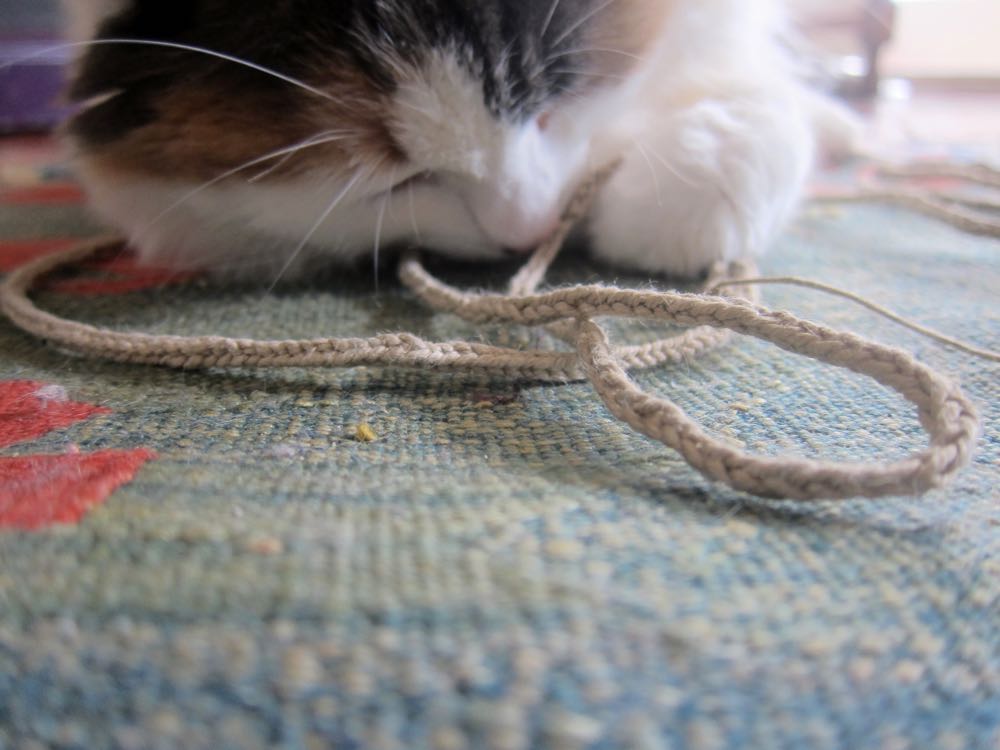
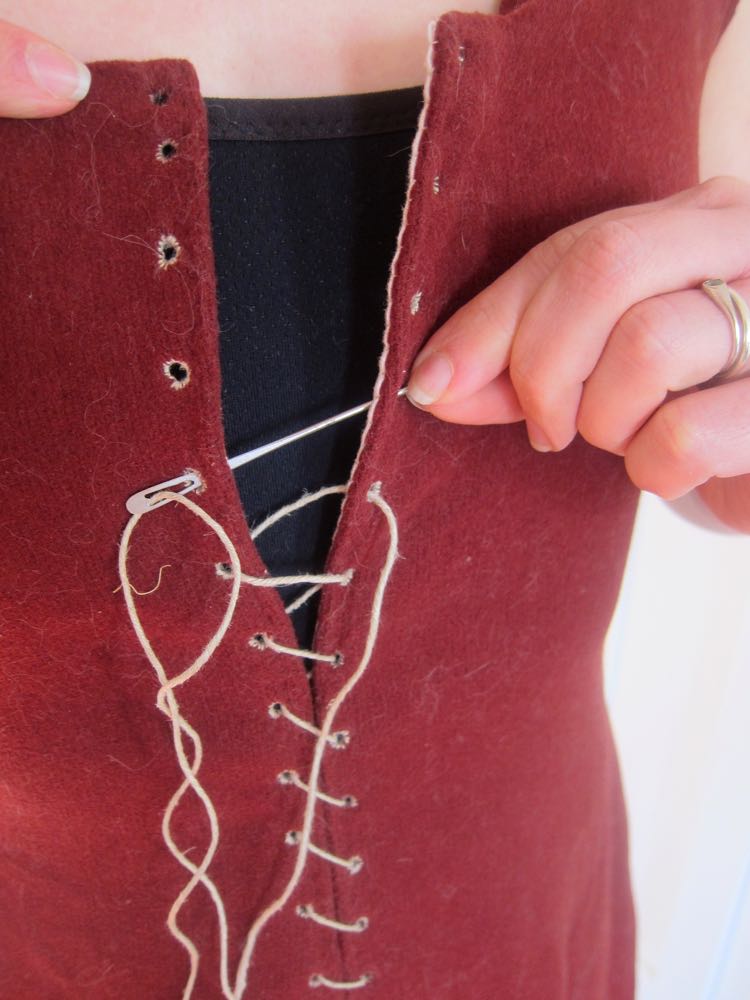
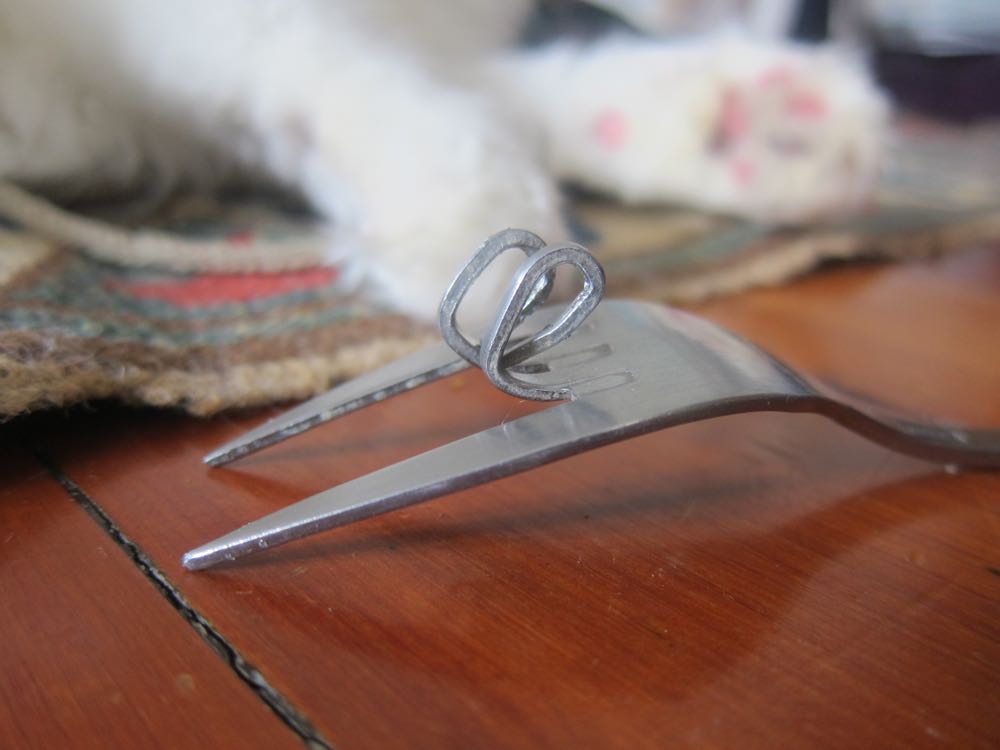
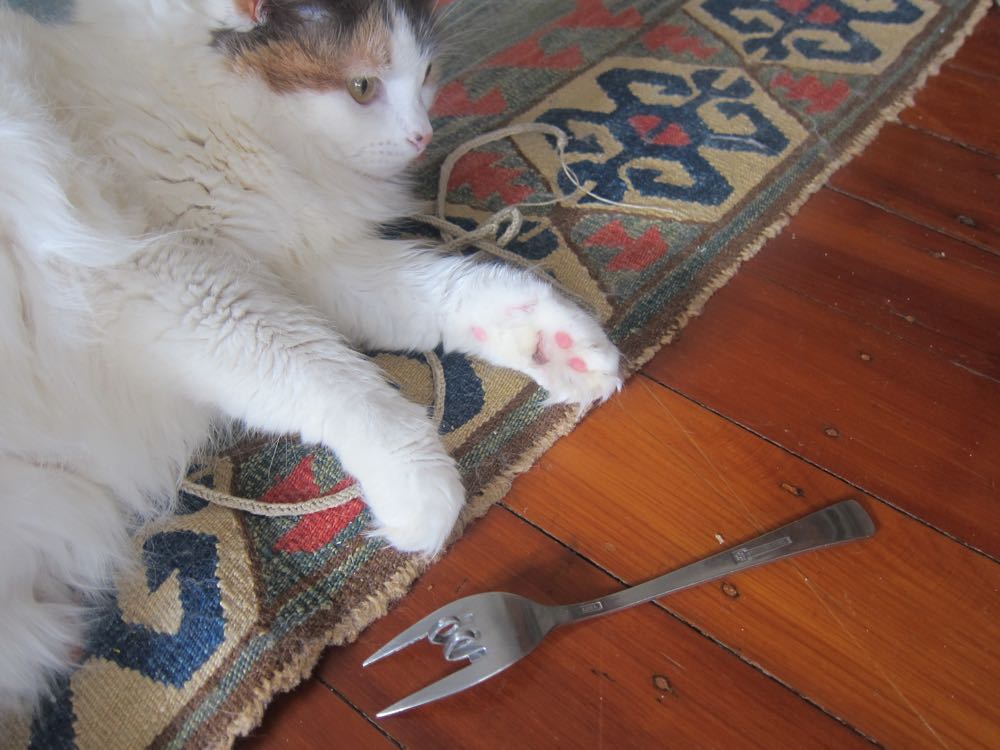
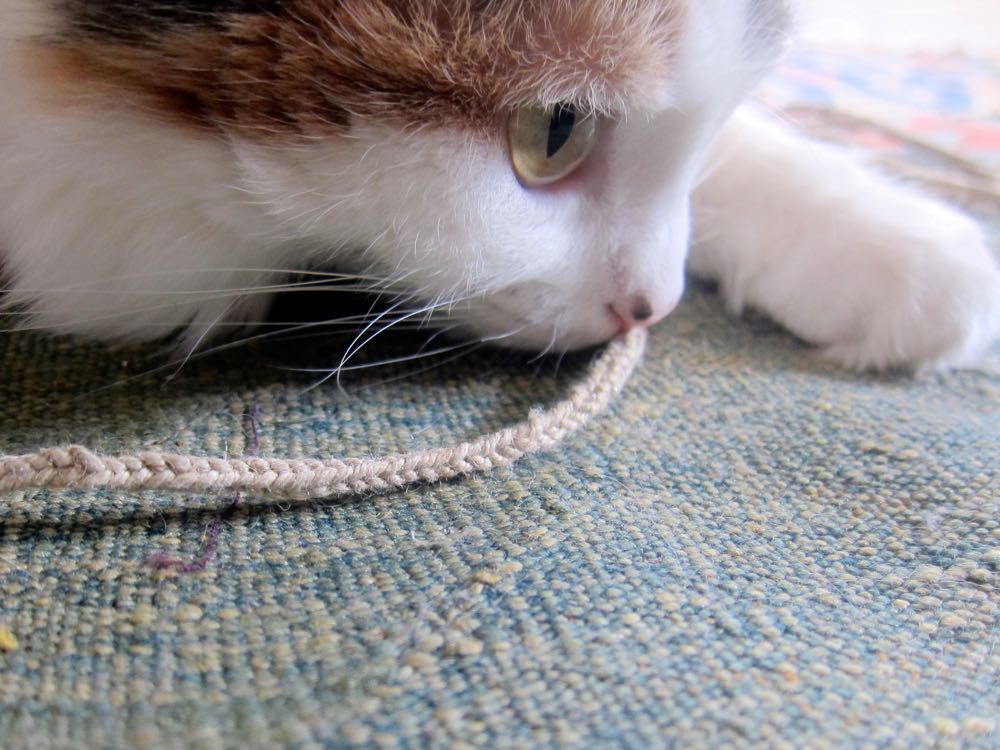

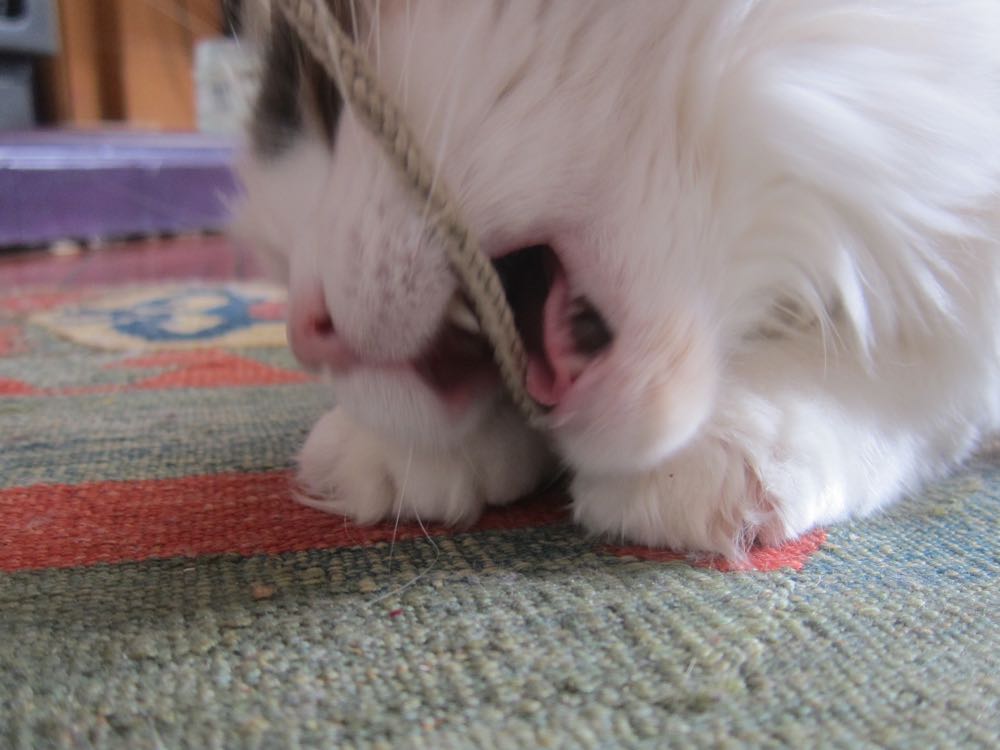
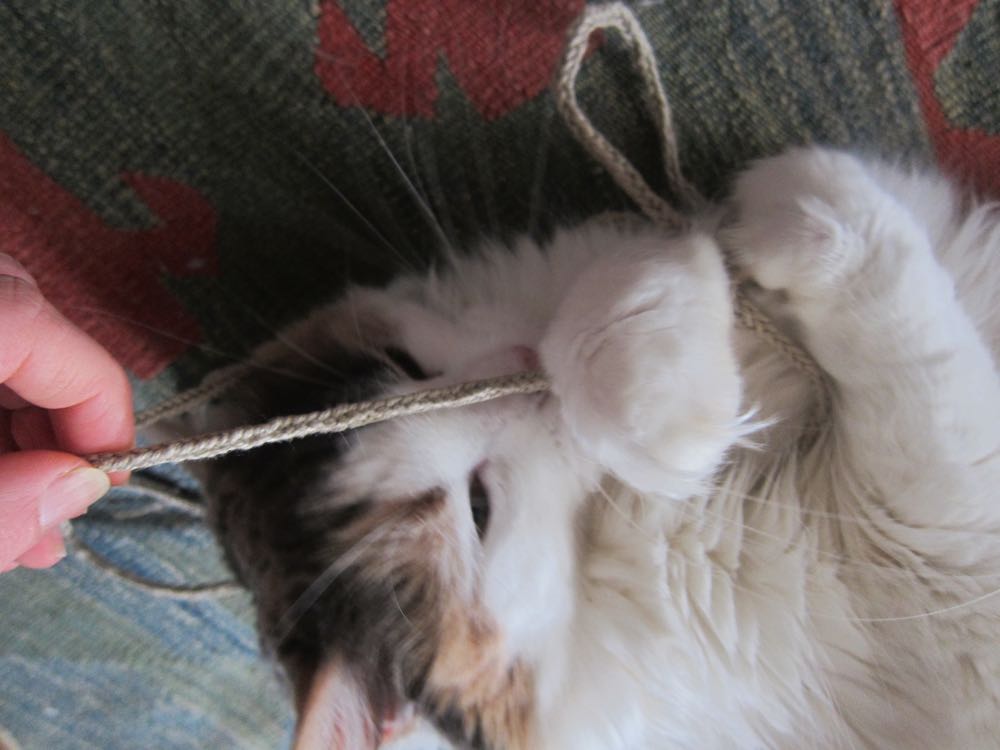
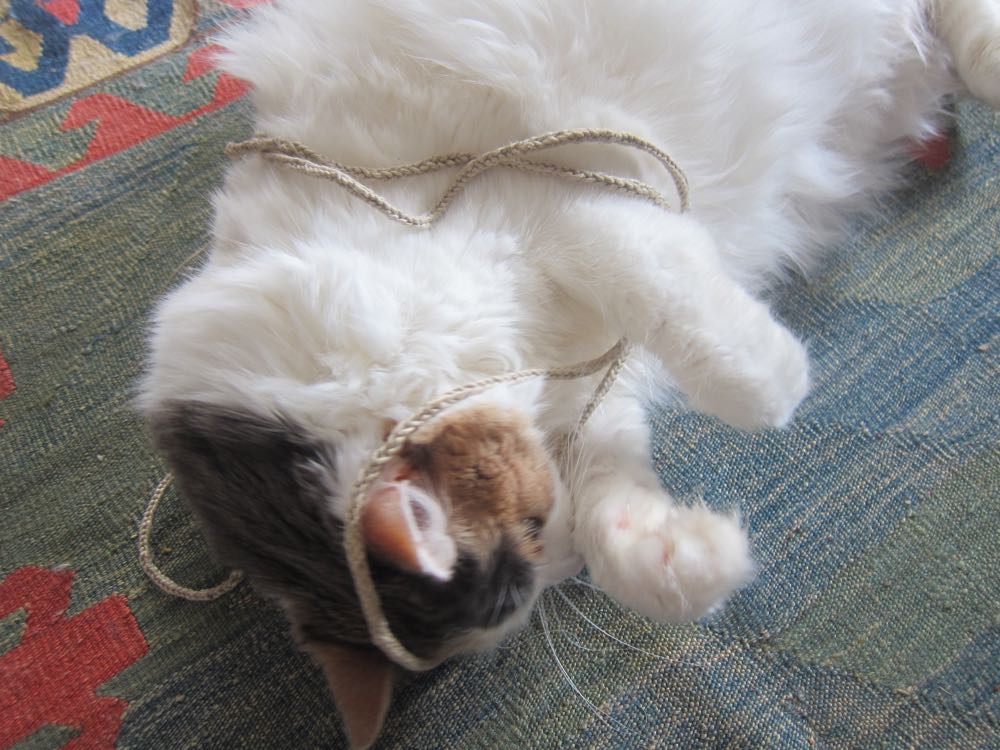

Collapsing from the cuteness! A fine video of Her Sweetness. And she does love that very nice cord!
Lesser cats have to settle for A Nice Piece of String – lucky Felicity!
Although lucets are pretty simple there hasn’t been any proof that I’ve actually seen that lucet cord was used before the 17th or 18th century. It may have been, and an SCA friend says she’s pretty sure she’s seen it on a 16th century embroidered bag, BUT so far, I haven’t seen compelling proof. Also, once it get worn, you know how fast it will unravel. Twisted cord is period and can be used, and there is a four strand braid called viking cord, that works.
I’d use the cord you made as a drawstring. I use mine in my drawers and it works fine. There is a lot less wear on a drawstring than on a bodice/corset/dress lace.
What did you think of this article as evidence? https://halldorviking.files.wordpress.com/2012/11/lucets-in-em.pdf
I think the halldor article is a fair general summary of the dubious quality of the evidence for lucetting in the Middle Ages, except the author bafflingly concludes that there is more evidence for lucets in the early Middle Ages than in the late Middle Ages. This argument is based on artifacts, many of which are not at all similar except for having two prongs, which are called “lucets” for no discernible reason. You can read my rants about the misuse of such evidence at these URLs;
http://cathyscostumeblog.blogspot.com/2013/12/an-aside-on-viking-lucets-courtesy-of.html
http://cathyscostumeblog.blogspot.com/2011/05/another-reflection-on-viking-age-lucets.html
http://cathyscostumeblog.blogspot.com/2011/05/more-on-lucets.html
http://cathyscostumeblog.blogspot.com/2009/10/viking-lucets.html
By the way, when I wrote the above posts, I had not realized, somehow, that the cord fragment Petterson wrote about was LATE 11th century (and arguably post-Viking age). That point isn’t relevant to your question about whether lucets are plausible for 14th c. Western Europe.
I have a lucet fork should you choose to make cord this way again however, at least in the SCA fabric circles, lucet is considered non-documented. I’ve also been told that, due to the way it’s braided, it will all unravel if part wears through one cord. Finger-type braiding is more recommended but I haven’t researched it yet as my first laced dress is still in early stages.
I tried to post a couple of links mentioning lacing last time – I think they are still stuck in the queue. The way the medieval dresses were laced was from top to bottom. You tied it off at the top and worked it down, stuffing the end into the skirt body. I have links depicting this – showing the ends not stuffed and just dangling at the waist. It’s why in the later portraits – who were still lacing the same way- you’ll see a tiny bit of cord sometimes popping up at the neckline of the dress. That’s the starter point.
Neat idea with the fork – I ‘ve done it just using my fingers. Unfortunately, as other point out, the cord does unravel quickly. Mine popped the first time I tried to wear it.
It was wonderful watching Felicity playing with “her” cord. Thanks for posting that!
Ah, lucet cord. I’ll admit to having quite a quantity about my person when reenacting (mostly because of this argument – that it looks enough like other laces that it is passable as a finished item: http://cathyscostumeblog.blogspot.co.uk/2013/12/an-aside-on-viking-lucets-courtesy-of.html). I do, however, no longer demonstrate it as a medieval craft.
If you’re thinking about fingerloop at some point (which is rather addictive once you get into all the patterns) I have some links on one of the tabs in my blog.
Oh, also – I’ve never, ever had any trouble with lucet cord unravelling and I’ve been using two bits to side-lace my dress for about 7 years and another two bits as garters for my hose for probably 5 years. I do, however, lucet very tight (using crewel wool, usually) and always use a darning needle to thread both ends back into the cord for about an inch in addition to tying off the finishing end.
This has started quite an interesting discussion on lucet cording! I quickly realised in the process that it wasn’t period, but still continued for the sake of finishing it (and I do actually do more 18th c than medieval dressing up, so it works better for me) but it’s fascinating to hear all the perspectives on accuracy or not. I particularly respect you’re and Cathy’s opinions, because I know that you both thoroughly research, trial, and THINK about the implications of any choice.
Ah, I wish I *always* think (or remember to think) about all of the implications of my historical costuming choices! But I try to do so within the limits of the time and resources at my command, and I’ve thought more about the “Vikings and lucets” debate because the quality of the available evidence vs. the vehemence of the lucet use proponents really began to bug me after a while.
Panth’s link above is very interesting. If you want to try finger loop braiding, I found http://loopbraider.com to have great tutorials, with lots of links to other rabbit holes. It’s hard to make long lengths by yourself though, because you are limited to how wide you can spread your arms (and it can get quite tiring with the repetitive motion).